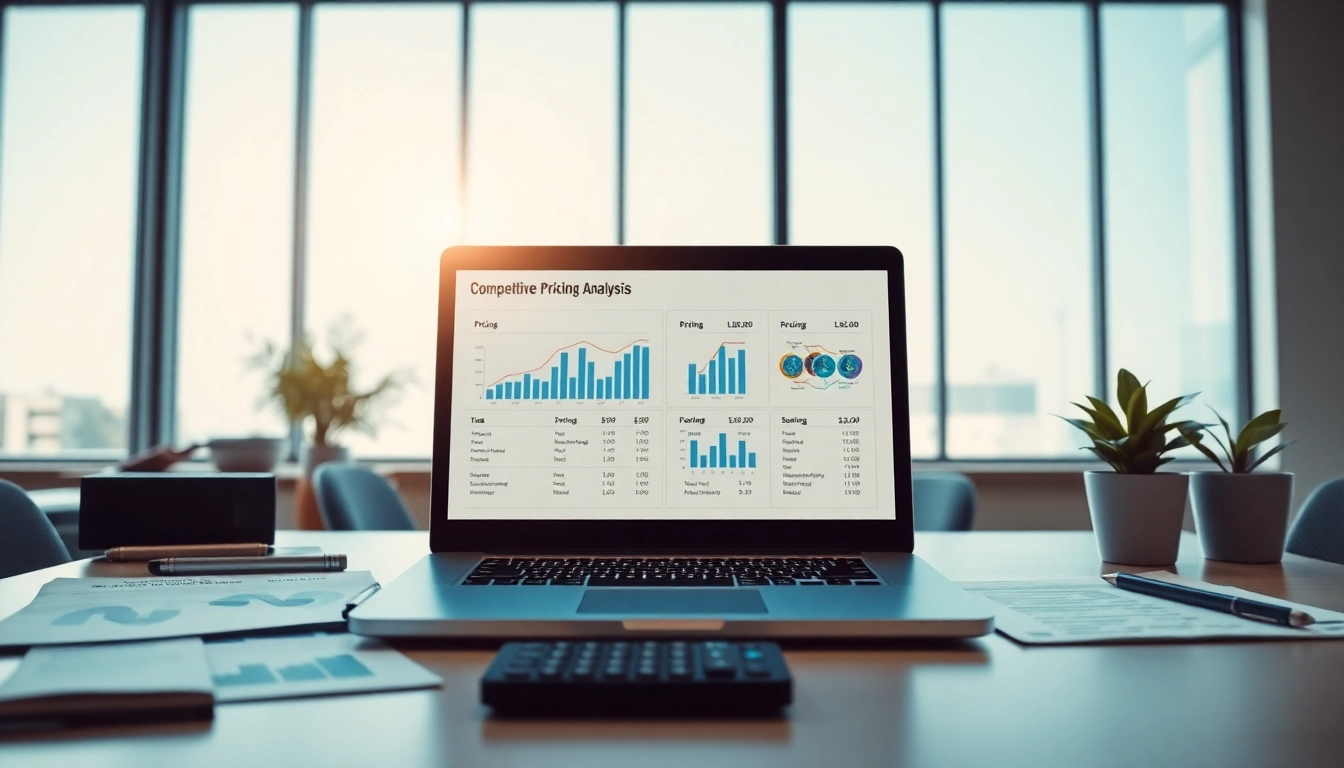Understanding the Basics of Competitor Pricing Analysis
What is Competitor Pricing Analysis?
Competitor pricing analysis is a strategic approach where businesses evaluate and compare their pricing structures against those of their competitors. This assessment involves gathering information on pricing trends, promotional offers, and overall market strategies. By systematically analyzing how competitors price their products or services, companies can make informed decisions about their own pricing strategies, ensuring they remain competitive and appealing to their target audience. The process not only involves direct price comparisons but also considers value perception, customer segments, and market positioning.
Importance of Competitive Pricing in Market Strategy
Pricing is one of the most crucial elements in a company’s marketing mix. It directly impacts revenue, profitability, and market share. A well-executed competitor pricing analysis can help businesses understand their relative position in the market, identify pricing opportunities, and mitigate the risk of losing customers to competitors. Furthermore, it allows businesses to position their product offerings effectively and ensure they address customer expectations while maintaining competitive advantages.
Key Components of Effective Pricing Analysis
The effectiveness of a pricing analysis relies on several key components:
- Data Collection: Utilize both primary and secondary research methods to gather accurate pricing data.
- Competitor Identification: Identify key competitors in the market whose pricing practices you wish to analyze.
- Pricing Models: Understand different pricing strategies used by competitors (e.g., penetration pricing, skimming, dynamic pricing).
- Market Trends: Analyze market demand, consumer behavior, and economic factors affecting pricing.
- Value Proposition: Assess how the perceived value of your products compares to competitors’ offerings.
Steps to Conduct an In-Depth Competitor Pricing Analysis
Identifying Your Competitors: Who to Analyze
The first step in competitor pricing analysis is to identify which competitors to study. This requires defining both direct and indirect competitors. Direct competitors offer similar products or services and target the same customer base. Indirect competitors may serve different needs but can impact market position nonetheless.
One effective method is to categorize competitors based on market share, geographical reach, and product differentiation. It’s also beneficial to consider emerging players in the market that might disrupt existing pricing norms.
Data Collection Techniques for Accurate Pricing
Data collection for pricing analysis can be carried out through various techniques:
- Website Scraping: Automated tools can collect pricing data from competitors’ websites for analysis over time.
- Surveys and Interviews: Engage customers to understand perceptions regarding pricing and value propositions.
- Industry Reports: Utilize research reports and industry publications that provide insights on pricing trends and competitive landscapes.
- Social Media Monitoring: Track promotional pricing and strategies shared by competitors on social platforms.
Analysing Pricing Data: Tools and Methods
Once data is collected, analyzing it effectively is essential. Several methodologies can help, including:
- SWOT Analysis: Analyze competitors’ strengths and weaknesses along with opportunities and threats related to pricing.
- Benchmarking: Compare your pricing against key competitors using established pricing benchmarks to reveal discrepancies.
- Visual Analytics Tools: Use data visualization tools (e.g., Tableau, Power BI) to identify pricing trends and patterns visually.
- Statistical Analysis: Utilize software like R or Python libraries for in-depth analysis of trends and correlations in pricing.
Common Challenges in Conducting Pricing Analysis
Dealing with Incomplete or Inaccurate Data
One of the primary challenges in pricing analysis is the availability and reliability of data. Incomplete or inaccurate data can lead to misguided strategies, potentially harming business performance. To mitigate this issue, implementing strict data validation processes and cross-referencing multiple sources can enhance data reliability.
Understanding Pricing Strategy Variations Across Industries
Different industries have distinct pricing dynamics influenced by factors such as consumer behavior, regulation, and competition. Businesses must adapt their analysis techniques to accommodate these variations. Conducting industry-specific benchmarks and gathering insights from experienced players can provide a more accurate understanding of pricing strategies relevant to a particular market.
Mitigating Risks During Analysis
Conducting a competitive pricing analysis carries inherent risks, including market shifts, competitor innovation, and economic fluctuations. To mitigate these risks, companies should maintain flexibility in their pricing strategies by regularly reviewing and adjusting their analyses based on real-time data and market feedback.
Best Practices for Competitive Pricing Analysis
Leveraging Technology for Pricing Insights
Technological advancements have made data collection and analysis much more efficient. Tools such as AI-driven analytics platforms can analyze vast amounts of consumer data, uncover pricing trends, and predict future shifts in the market. Emphasizing technology can streamline the pricing analysis process, allowing businesses to respond rapidly to competitive changes.
Integrating Customer Feedback Into Pricing Strategies
Incorporating customer feedback into pricing strategies is essential. Understanding customer perceptions about value and pricing can help tailor competitive strategies that resonate. Surveys, feedback forms, and social media sentiment analysis are valuable resources in shaping optimal pricing strategies.
Continuous Monitoring and Adjustment of Pricing
Price monitoring should be an ongoing process. Regularly revisiting competitive pricing analysis ensures that businesses remain competitive in the market. Utilizing dashboards for real-time monitoring and setting KPI benchmarks can guide timely adjustments to pricing strategies based on market conditions.
Case Studies: Successful Competitor Pricing Analysis
Industry-Specific Examples
Examining successful case studies can provide valuable insights into effective competitor pricing analysis. For instance, a retail company may leverage a competitor pricing strategy where it identifies pricing trends during sales seasons and adjusts its prices to remain attractive versus competitors.
In the SaaS industry, firms often assess competitors by analyzing their subscription models. A prominent company took note of service features and associated prices, allowing them to refine their offerings and price accordingly, resulting in improved market share.
Lessons Learned from Major Brands
Major brands like Apple, Amazon, and Walmart are known for their effective pricing strategies. Apple often conducts competitor analysis when launching new products, ensuring that pricing reflects both premium positioning and competitive value. Similarly, Amazon utilizes dynamic pricing based on continuous monitoring of competitor prices, enabling it to adjust in real-time and maintain a competitive edge in the eCommerce space.
Impact of Effective Pricing Analysis on Revenue Growth
Effective competitor pricing analysis has been linked to notable revenue growth. Businesses that invest the time to understand their competitive landscape often see increased market share and improved financial performance. A comprehensive pricing strategy combined with ongoing analysis can lead to stronger customer loyalty and ultimately result in sustained revenue increases.















Leave a Reply